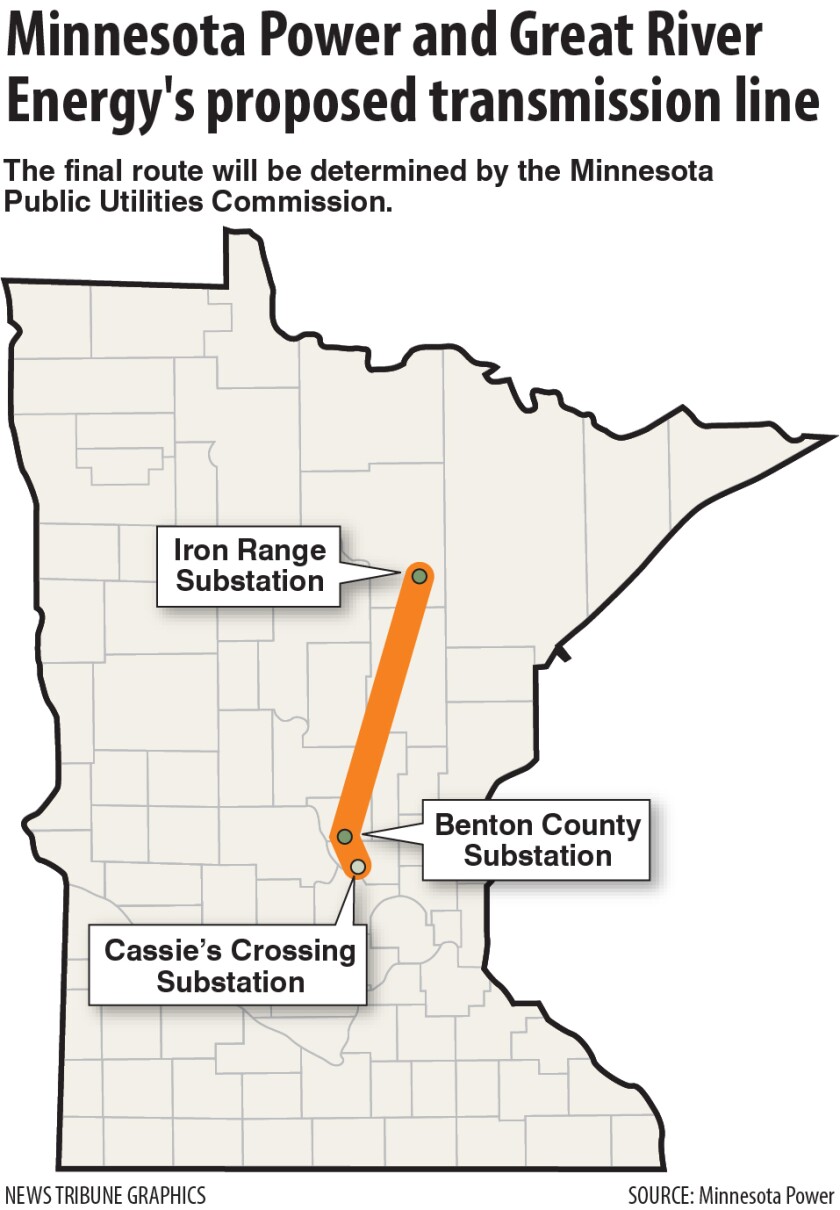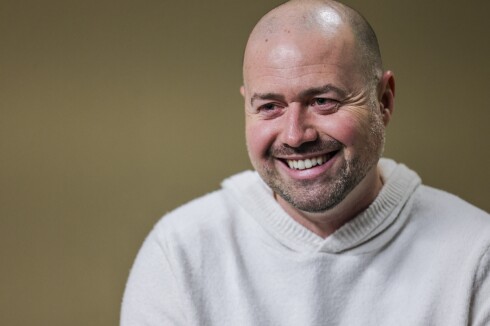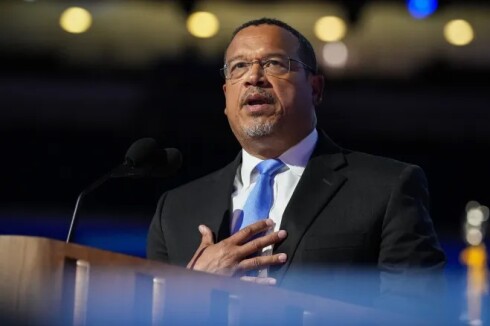DULUTH — Minnesota Power and Great River Energy are planning to build a nearly $1 billion, 150-mile-long transmission line from the Iron Range to central Minnesota.
On Monday, Minnesota Power, a Duluth-based utility owned by Allete, and Great River Energy, which provides electricity to cooperatives across Minnesota, announced it would jointly build the double-circuit 345-kilovolt line stretching from Minnesota Power’s Iron Range Substation in Itasca County to Great River Energy’s Benton County Substation and then to a new Great River Energy substation in Sherburne County.
ADVERTISEMENT
It is expected to be operational by 2030.
The transmission line is aimed at bolstering grid reliability as renewable energy replaces traditional coal-fired plants, said Josh Skelton, Minnesota Power’s chief operating officer.
While many transmission lines were built in the days of centrally located coal plants, coal’s renewable replacements are further away from customers and more spread out.
Those sources need to be tied together, Skelton said.
”We have more renewables from further distances. We need ways to plug that in to keep the grid healthy, to keep the reliability up,” Skelton said. “So to be able to move large volumes of energy in a dynamic time, you need more interconnections, you need the ability to connect and transmit over longer distances.”

Minnesota Power, which reached more than 50% of renewable energy last year and plans to be carbon free by 2050 , has retired seven of its nine coal units with the plan of going coal-free by 2035.
The transmission line project was one of 18 projects totaling $10.3 billion approved by the region’s grid operator, the Midcontinent Independent System Operator, or MISO, in a meeting Monday afternoon.
ADVERTISEMENT
In the meeting, Mark Johnson, a member of the MISO board of directors, said approval of the projects was “the first step in the necessary regional transmission expansion required to meet the challenges of the future.”
Several more rounds of such project approvals are expected. The costs to build the projects will be split among customers within MISO’s region, which covers 15 states and Manitoba.
Approval of the projects was praised by several environmental groups, including the Union of Concerned Scientists and Fresh Energy.
“Today is a significant step toward building the modern, resilient, and reliable electric transmission system necessary to decarbonize the energy sector,” James Gignac, senior Midwest energy analyst at the Union of Concerned Scientists, said in a news release Monday. “MISO’s approval of the tranche 1 projects will prevent 400 million metric tons of carbon emissions between 2030 and 2050 and allow for updates that the power grid has needed for a long time. These investments are a crucial and cost-effective way to enable MISO states, utilities, and customers to achieve their clean energy goals.”
The project will still need a certificate of need and route permit from the Minnesota Public Utilities Commission. Minnesota Power and Great River Energy anticipate beginning that regulatory process next year.
An exact route has not been set, but company officials hope to follow existing utility corridors. Consultation with landowners, local governments, tribal nations and others will begin later this year, Minnesota Power said.
“Our desire is to follow an existing transmission line the whole way there. … We don't want to disrupt any kind of new areas that we don’t have to. It’ll be adjacent to existing lines,” Dan Gunderson, Minnesota Power’s vice president of transmission and distribution, told the News Tribune on Monday.
ADVERTISEMENT
In a news release distributed by Minnesota Power, Priti Patel, Great River Energy’s vice president and chief transmission officer, said transmission projects will help “build resilience to extreme weather and other consequential events.”
“The right transmission will ensure we can make the transition to more low-cost renewable energy and maintain the reliability our members expect,” Patel said.









